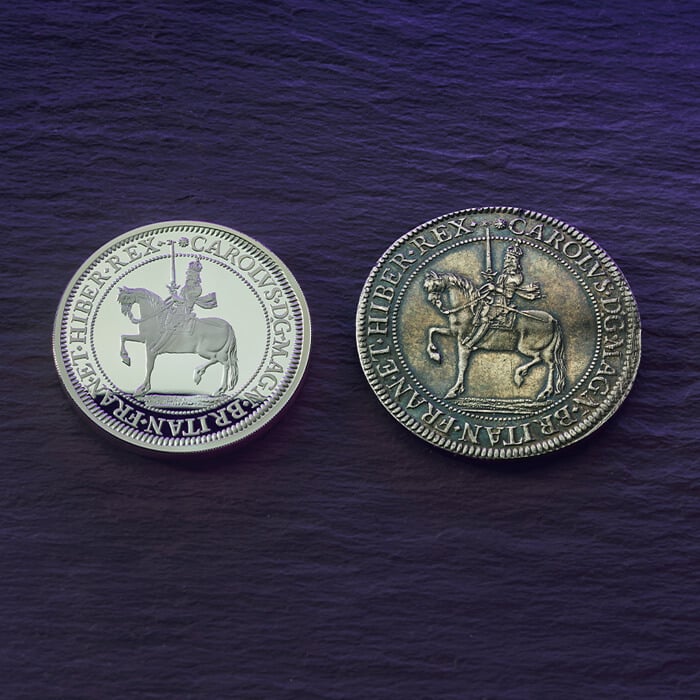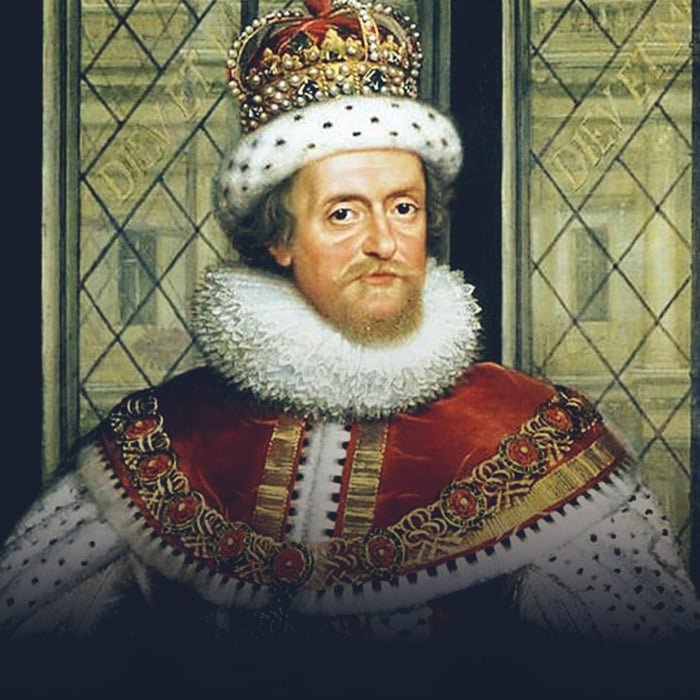The sixth coin released as part of our British Monarchs Collection features the portrait of the second king from the House of Stuart, Charles I. Born in 1600, Charles I was the second son of the then James VI, King of Scotland, and was never expected to become heir to the throne. Charles was a sickly child, and initially remained in Scotland when his father became James I, King of England, as his family felt that the journey would prove too stressful for him. When his health improved and he was able to overcome his physical challenges, Charles joined his family in England.
The eldest son of James I, Henry, became ill at a young age and passed away when Charles was nearly 12. Following the tragedy, Charles became the future King of England, and was made Prince of Wales in 1616. James I was a believer in the divine right of kings – that kings received their authority from God, and so were only answerable to His divine rule – and therefore believed that he didn’t have to answer to the likes of politicians or noblemen.
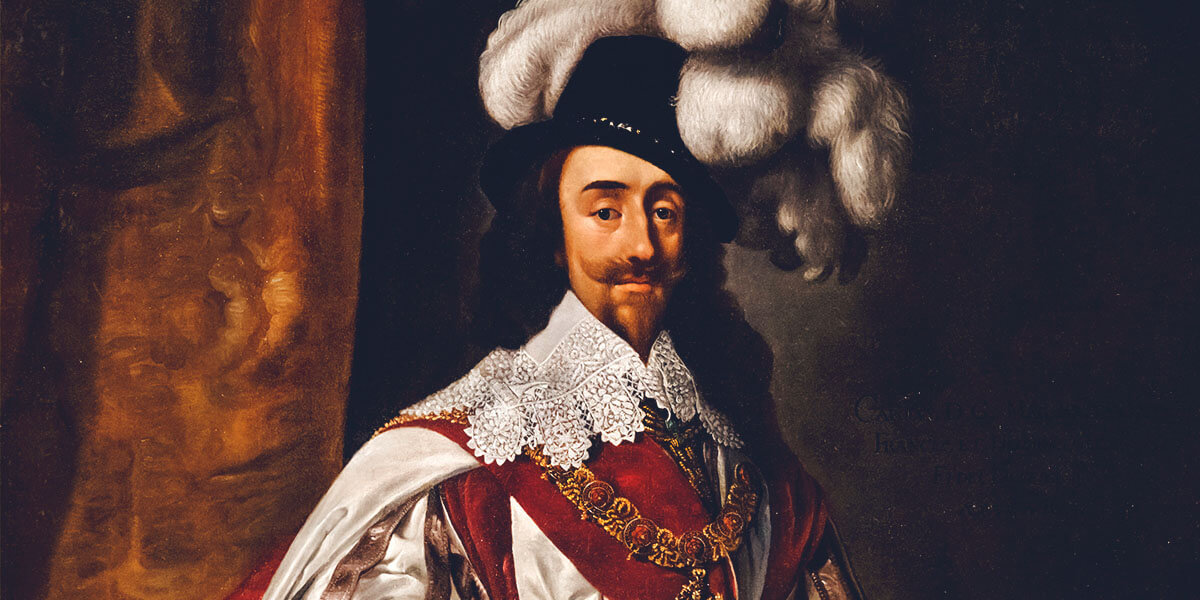
During his time as Prince of Wales, Charles attempted to secure a marriage to the Spanish Infanta. He travelled to Spain in 1623 to do so; however, negotiations failed and Charles returned to England. Angry, Charles tried to persuade his father to declare war on Spain, but the breakdown of the match was popular with people in England, as they didn’t want a Catholic queen sitting on the throne.
On 27 March 1625, James I passed away, and Charles I acceded to the throne at the age of 24. Just like his father before him, Charles was a staunch believer in the divine right of kings, believing that only God had the right to judge him for his actions and that parliament shouldn’t interfere with how he chose to rule.
Despite the unpopularity of his previous match, Charles I did not accept the public’s perception of a Catholic alliance. He secured a marriage to Princess Henrietta Maria of France, and delayed the opening of parliament until the marriage had been finalised. Fuelling speculation in the House of Commons that Charles I had Catholic sympathies, alongside his plans to start a war with Spain, this only widened divisions between the monarch and parliament.
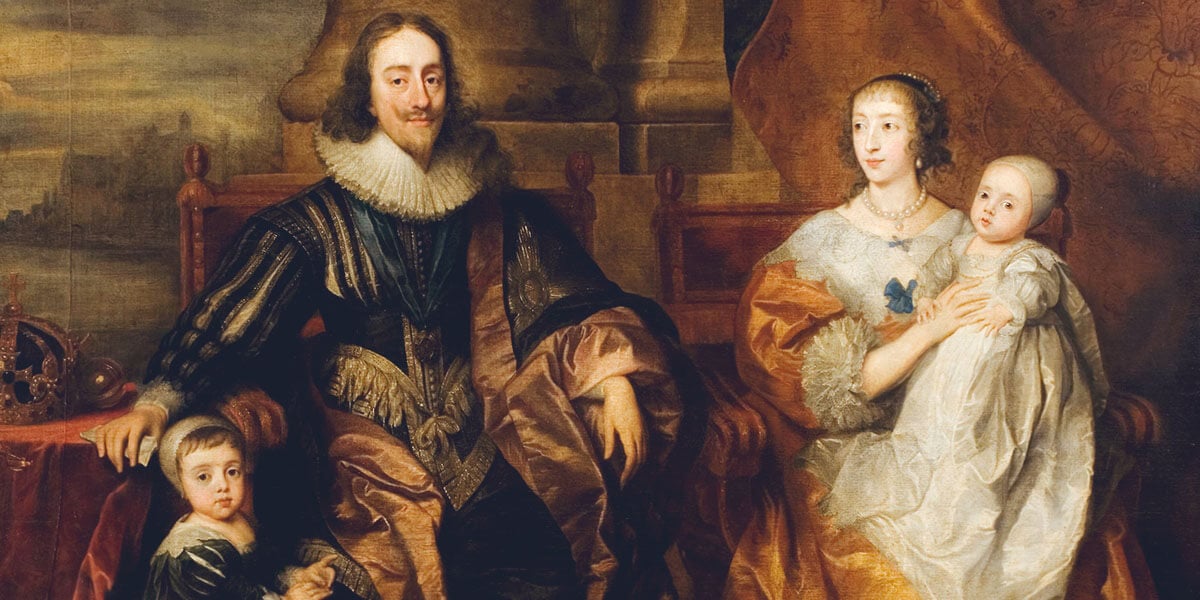
British coinage during the reign of Charles I underwent various changes. The Tower of London ceased to strike dates on sixpences, a method first introduced during the reign of Elizabeth I to distinguish the coin from the groat. The output of gold coinage decreased, and the angel was the sole fine gold coin in circulation by the end of Charles I’s reign. A popular coin, many believed that once the monarch had touched an angel coin, it would protect the owner from scrofula and offer a cure for this prevalent disease.
The output of silver coinage increased during the reign of Charles I alongside the decline in gold output, and the silver halfcrown gained more popularity over the gold halfcrown. In 1626, it was requested that The Royal Mint reduce the standard weight of silver coins. One of the other major changes during Charles I’s reign was the introduction of Nicholas Briot to The Royal Mint in 1628. Previously the Engraver General at the French Mint, he became the Chief Engraver of The Royal Mint in 1633, and many considered his coins neater and better executed than those his predecessor created.
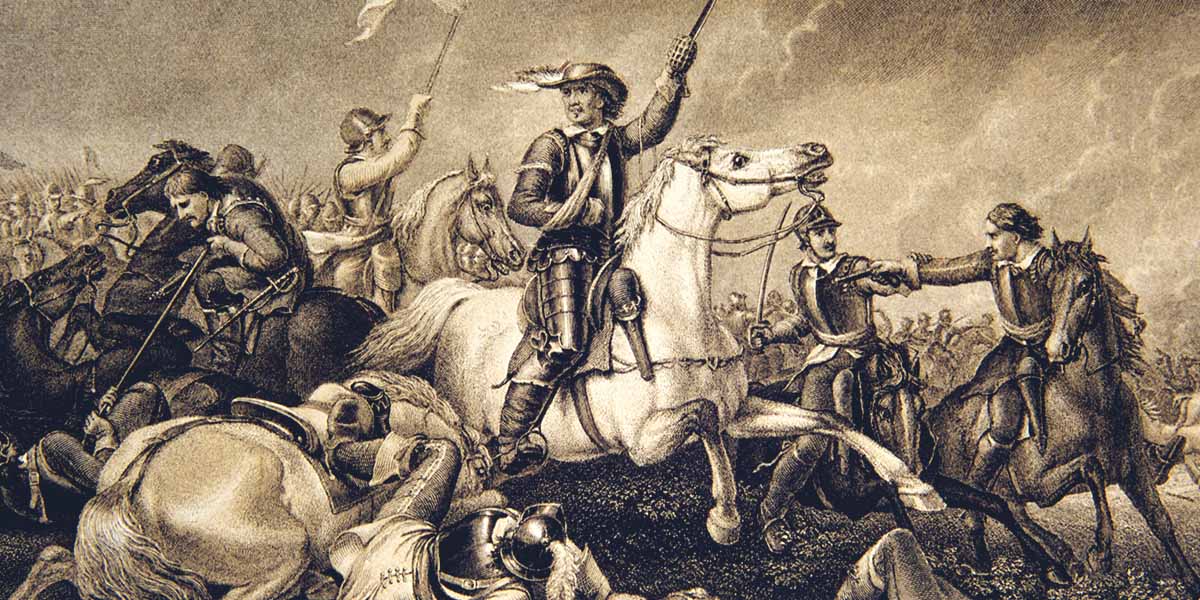
Over the years, the relationship between Charles I and parliament became very strained. Charles I needed to fund his war efforts against Spain, and needed parliament to approve the raising of taxes, as he didn’t have the legal power to do so on his own. When parliament refused, Charles I dissolved the sitting parliament, which only heightened the tensions between them. This happened repeatedly, and eventually culminated in the English Civil War, which had a serious impact on coinage produced at the time.
Charles I left London within the first few months of the Civil War, where Parliamentarians had control over the city as well as the mint at the Tower, which meant that Charles I had to find other ways to produce the coinage needed to fund the war effort. A mint was already established in Aberystwyth, so Charles I established other mints at Shrewsbury, Oxford, Bristol, Truro, Exeter, York and Chester. It is difficult to determine exactly how many coins were produced at these different mints during the Civil War.
The English Civil War lasted for several years and ended with Charles I imprisoned by the Parliamentarians. Two years of negotiations and escape attempts were of no avail, and Charles I stated ‘if I cannot live as a King, I shall die a gentleman’. Oliver Cromwell tried the king for treason and he was sentenced to death. On the day of his execution, Charles I asked for two shirts, so he wouldn’t shiver, which could be misconstrued that he was scared of death.
Several years after the execution of the king, Oliver Cromwell became Lord Protector of the country and ruled instead of a monarch. His son succeeded in his role after Cromwell’s death but with little success. Eleven years after the death of Charles I, his eldest surviving son Charles II was invited back from his exile in Europe to take up his father’s mantle as king.

